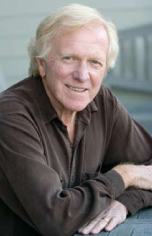Do you want a Marin composed primarily of wealthy residents that neglects seniors, working families and agricultural interests? A county that’s increasingly bureaucratic and discouraging toward business? I don’t.
Marin’s Board of Supervisors is holding hearings on a major update of the Countywide Plan. That plan, first crafted in 1974 and updated every 10 years since (now it’s three years overdue), will be the next decade’s blueprint for development. At stake is whether Marin will continue to be a progressive and accommodating organic entity—or make a conservative turn toward an overly rigid and restrictive future.
A key issue (which I wrote about in June) involves extending an environmental protection device, the “Baylands Corridor,” to include all of St. Vincent’s, a 770-acre parcel adjacent to Highway 101 north of San Rafael. “It is nothing but a ploy to halt development on the site, even for much-needed affordable housing,” says Tiburon’s Judy Binsacca, who has spent much of her adult life studying and advocating for affordable housing. “No scientific tools, such as field studies, have been cited to justify extending the corridor’s boundary.”
St. Vincent’s is owned by the Catholic Church, which operates a school for at-risk boys on the site and barely maintains its cluster of majestic 80-year-old buildings that house such entities as the Holy Rosary Chapel, Marin Dance Theatre and the Dunham Academy.
In order to raise money to improve its holdings, St. Vincent’s wants to develop what it calls a “Community of Care”—a larger youth facility, 350 units of housing for seniors (affordable and market rate), a retirement community, and workforce housing for caregivers. All together that would occupy 10 percent of St. Vincent’s 770 acres. The project complies with current zoning and, according to proponents, would not generate significant additional traffic nor be visible from the 101 Freeway.
However, the planning commission has recommended Marin supervisors extend the corridor into St. Vincent’s and that the church build no more than 221 units (121 affordable; 100 market rate) on 5 percent of the property.
This position not only violates the intent of the current Countywide Plan, it is unfair. “The Baylands Corridor contains such a web of environmental restraints that reasonable economic development of St. Vincent’s would be impossible,” says Binsacca. “Whatever happened to the concept of sustainability promised in the Countywide Plan? Whatever happened to fairness and equity to the property’s owners?”
A second critical issue under consideration in the Countywide Plan update involves home sizes and public trails on West Marin agricultural land. The current plan zones much of the area A-60, meaning only one home is permitted on every 60 acres. “Now the supervisors are considering no more than 8,500 cumulative square feet of housing no matter how large a parcel is involved,” says Dominic Grossi, a third-generation Novato dairy farmer and a vice president of the Marin County Farm Bureau. “That means where we once could have seven homes on our 460 acres, now we can have maybe four—and three have already been built for Grossi family members. This greatly devalues our property, which is our retirement.”
Grossi says no active rancher or farmer was involved in putting together the final proposal (no one at the county could or would refute that claim). “It adds another restriction when we already have too many restrictions,” he says. “It’s becoming not feasible or economically possible to buy or sell property in West Marin, and while we need innovative farmers here, who’s going to buy when all this bureaucracy is involved?”
Also of concern to the agricultural community is the Countywide Plan’s intent to designate public trails over privately held agricultural land. “I know they’ll be listed as ‘proposed trails,’” Grossi says. “But if a rancher wants to improve property where a ‘proposed trail’ has been designated, he’ll be required to convey a ‘voluntary easement’ as part of the permitting process, and to me that’s extortion.” (Note: Marin already has 640 miles of hiking trails.)
I believe these issues represent unnecessary encroachment of local government into private property rights—under the guise of “protecting the environment.” Marin’s environment is already more than well protected and it’s time the county concern itself with the needs of seniors, the working class and its farmers and ranchers.
That’s my point of view. If you agree, please contact your supervisor at [email protected] or 415.499.7331.
Email [email protected]


